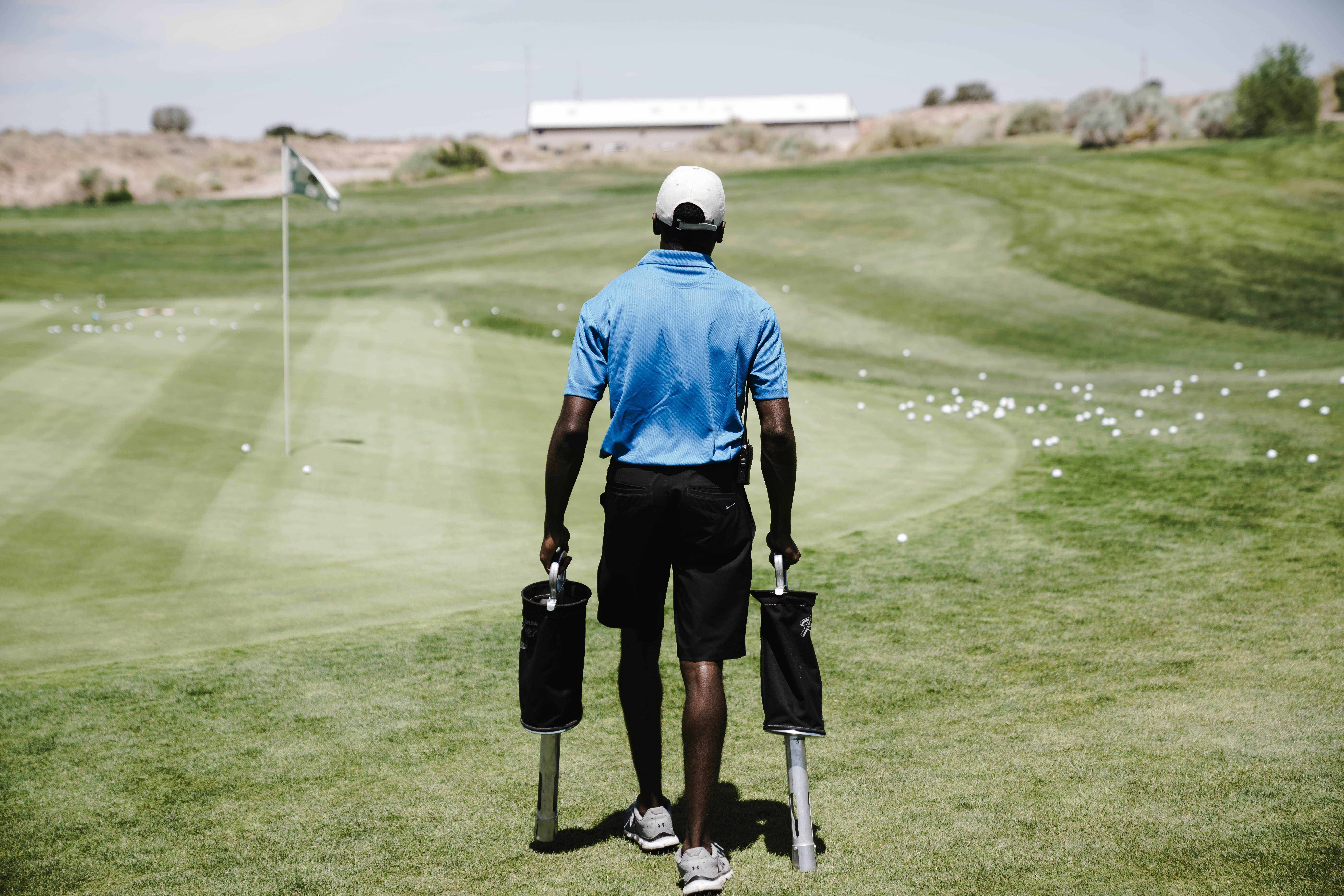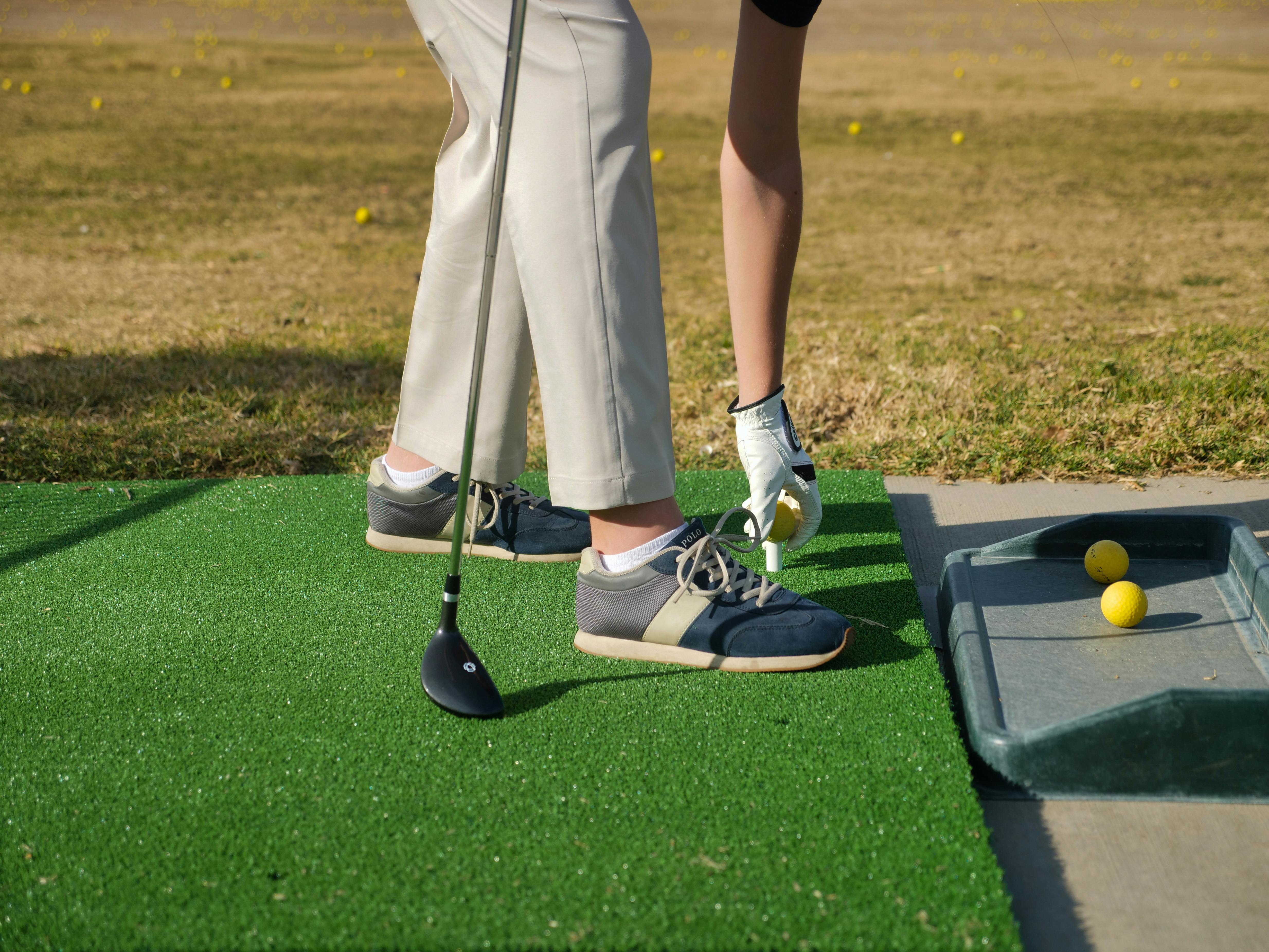Golf is a sport that combines precision, skill, and technique – and an important part of the game is the golf ball. But how fast do golf balls actually go when they are struck with a club? In this article, we will explore the various factors that affect the speed of a golf ball and how different clubs can be used to vary its speed.Golf balls typically travel at a speed between 80 and 200 mph. The exact speed depends on the club used and the strength of the golfer’s swing.
Clubhead Speed
Clubhead speed is one of the most important factors that determine golf ball speed. It is the speed of the clubhead when it strikes the ball. It is important to generate a high clubhead speed to achieve maximum distance off the tee. A slow clubhead speed will result in a decrease in ball distance. Many players try to generate as much clubhead speed as possible while keeping their swing smooth, balanced and consistent.
Launch Angle
Launch angle is how high or low the golf ball is launched off the tee. A higher launch angle will increase ball carry distance, whereas a lower launch angle will reduce it. In order for a player to achieve maximum distance off the tee, they must strike the ball with an optimal launch angle. This can be achieved by adjusting your swing path and making sure that you are striking down into the golf ball at impact.
Spin Rate
Spin rate is also an important factor when it comes to determining golf ball speed. It refers to how fast or slow the golf ball spins after it has been struck by your clubface. A low spin rate will result in less backspin on the golf ball, which means it won’t be able to stay airborne for as long as a shot with higher spin rates would be able to do. Higher spin rates also help keep your shots straighter and more accurate since there is less side-spin on them.
Golf Ball Compression
Golf ball compression is another factor that affects golf ball speed. It refers to how hard or soft a given golf ball is when struck by your clubface. Harder balls tend to produce more distance, while softer balls tend to produce less distance but more accuracy and feel around greens. Golfers should choose their golf balls based on what type of shot they are trying to hit and what kind of performance they are looking for from them.
Grip Pressure
Grip pressure also plays an important role when it comes to determining golf ball speed. Too much grip pressure can cause you to grip the club too tightly which can lead to tension in your arms and wrists during your swing, resulting in decreased power and accuracy from your shots. Too little grip pressure can mean that you don’t have enough control over your shots, resulting in wild trajectories and poor accuracy.
In conclusion, many factors play a role in determining golf ball speed including clubhead speed, launch angle, spin rate, compression and grip pressure. Finding just the right combination of these elements can help any golfer achieve maximum performance from their shots off the tee while still maintaining consistency with their swing mechanics.
Golf Ball Speed
Golf ball speed is an important factor in the game of golf. It affects the distance a golf ball can travel and the accuracy of a shot. Studies have been conducted to understand how different factors, such as clubhead speed, loft angle, and spin rate, affect golf ball speed. Researchers have also studied the effects of different materials used in golf balls on their speed.
The most important factor that affects golf ball speed is clubhead speed. The faster the clubhead speed, the farther the ball will travel. The loft angle of the golf club also plays a role in how far the golf ball will go; higher-lofted clubs cause less spin on the ball and therefore less distance. Additionally, spin rate has an effect on golf ball speed; higher-spinning balls tend to slow down more quickly in flight and lose distance due to drag forces.
Materials used in golf balls play an important role in their performance as well. Different materials have different properties that affect how fast a golf ball travels through the air. For example, softer materials create more friction with the air and slow down more quickly than harder materials do. In addition, some materials can create a dimple effect on impact which helps reduce air resistance and increase distance traveled by the ball.
Overall, there are many factors that affect how far a golf ball will travel when hit with a club. Understanding these factors can help improve a golfer’s performance and maximize their potential for success on the course.
Distance of Shots and Golf Ball Speed
The distance of a golf shot is heavily dependent on the speed of the golf ball when it is struck. The faster the golf ball is moving, the farther it will travel. Therefore, it is important for golfers to understand how to increase their golf ball speed in order to improve their distance off the tee. To do so, they must focus on improving their swing mechanics and use a driver that maximizes their swing speed.
Golfers can also increase their ball speed by using a driver with a higher loft angle. A higher lofted driver will produce more lift, which helps get the ball airborne quicker and reduces drag as it travels through the air. This increases the overall distance of each shot as well as its accuracy. Additionally, using a driver with a larger clubhead size can also help increase one’s ball speed and ultimately improve their game.
Finally, golfers should also consider using lighter shafts in order to maximize their swing speed. Lighter shafts are easier for most players to generate more power with each swing, resulting in faster golf balls and longer drives off the tee. All these factors should be taken into account when selecting a driver in order to maximize one’s distance off the tee and improve their overall game.
Golf Ball Speed and Professional Players
The golf ball speed generated by professional players is an important factor that determines the success of a golf shot. Professional players can generate more speed and distance with their golf ball than amateur players, making them more successful in the game. The speed of the golf ball is determined by a combination of factors, including the type of club used, the angle of impact, the body mechanics of the player, and the force applied to the ball. Professional players are able to generate more speed and distance due to their experience and ability to use proper technique.
The type of club used has a significant effect on the speed of a golf ball. The type of club head can affect how much spin is generated when hitting a shot, as well as how much energy is transferred from club head to ball. Golf clubs with larger club heads tend to generate more spin when hit, giving players greater control over their shots. Clubs with longer shafts also have more potential energy stored in them, which can be transferred to the ball when hit.
The angle of impact on a golf shot is another factor that affects speed and distance. A steeper angle will result in less loft on the shot and more roll out once it lands on the ground. A shallower angle will create more lift on the shot and less roll out after it lands on the ground. Professional players typically have better control over their angles than amateur players, allowing them to maximize their distance potential with each shot they take.
Finally, body mechanics play an important role in generating golf ball speed and distance for professional players. Proper posture during setup is essential for maximizing power transfer from player to ball during impact. Additionally, good hip turn throughout their swing helps generate additional power from their lower body muscles which can help increase distance on their shots.
In conclusion, professional players are able to generate greater speeds and distances with their golf balls due to having better control over several key factors including type of club used, angle of impact, body mechanics during setup and swing execution as well as force applied when hitting a shot. This allows them to maximize their potential during each round they play resulting in better scores overall.

Impact of Clubs on Golf Ball Speed
Golf clubs are one of the most important pieces of equipment for a golfer. They can drastically impact the speed at which a golf ball travels, and can make the difference between hitting a good shot and missing it altogether. The type of club used, the weight, length, and shaft flex all have significant implications for how far the ball will travel.
The type of club used is one of the main factors in determining golf ball speed. A driver is designed to hit long distances, and is usually the longest and most flexible club in a golfer’s bag. Irons are typically shorter than drivers and more rigid, making them better suited for accuracy than distance. Wedges are even shorter with more loft to help players hit higher shots with more backspin.
The weight of a club also affects golf ball speed. Heavier clubs require more effort to swing but add power to shots, while lighter clubs require less effort but can cause shots to lose distance if not swung correctly. Finding the right balance between weight and power is key to maximizing golf ball speed.
The length of a club impacts how far it can hit a ball as well as how easily it can be controlled by the golfer. Longer clubs require more powerful swings but can often generate greater distances than shorter clubs; however, shorter clubs are easier to control since they require less effort to swing correctly.
Finally, shaft flex plays an important role in determining golf ball speed as well. Stiffer shafts generate more power but often lack accuracy, whereas softer shafts provide greater control but reduce power output slightly. Finding a shaft that provides both power and control is essential for optimizing golf ball speed.
In conclusion, golf clubs have an enormous impact on how far a golf ball will travel when struck by them. The type of club used, its weight, length, and shaft flex all influence how fast the ball will travel when struck with that particular club; thus it’s important for any golfer to find the right combination of these factors if they want to maximize their distance off the tee or approach shots on the green.
The Physics Behind the Speed of Golf Balls
Golf is a game that requires players to understand the physics behind the speed of golf balls. The speed and trajectory of a golf ball are determined by its mass, momentum, and aerodynamic properties. Momentum is the product of mass and velocity, so a greater mass or higher velocity will yield more momentum. In order to achieve maximum distance and accuracy, golfers must understand how their swing affects the momentum of the ball.
The moment of inertia is also important in understanding the physics behind golf ball speed. This is because it affects how much force needs to be applied to change the ball’s direction. A longer club will have more moment of inertia than a shorter one due to its increased length. This means that more force is needed to rotate it, which translates into higher ball speeds when hit correctly.
In addition to moment of inertia, club head speed also plays an important role in determining how far the golf ball will travel. The faster you swing your club, the further your golf ball will travel. However, if you swing too fast, you can lose accuracy as well as distance due to over-rotation or poor contact between the club face and the ball. The optimal combination of club head speed and moment of inertia can help you hit long drives with accuracy and consistency.
Finally, another factor that affects golf ball speed is aerodynamics. The shape and size of a golf ball’s dimples influence its flight path through air resistance. Dimples on a golf ball reduce air resistance by creating turbulence which helps keep it in flight longer and increases its distance traveled. Larger dimples create more turbulence which leads to greater distances but less accuracy while smaller dimples help maintain accuracy but reduce distance traveled slightly.
Overall, understanding the physics behind golf ball speeds can help improve your performance on the course. By taking into account factors such as moment of inertia, club head speed, and aerodynamics you can craft swings that maximize your distance while maintaining accuracy and consistency for long drives off the tee box or approaches onto greens from fairway lies alike!
Wind Resistance and Its Effect on Golf Ball Speed
Golf ball speed is an important factor in determining the distance of a golf shot. Wind resistance is one of the main forces that can affect the speed of a golf ball. When a golf ball is hit, the air around it creates an aerodynamic force that will push against the ball, slowing it down. This force is known as wind resistance. Wind resistance can be affected by several factors, such as wind direction, wind speed, and temperature.
The wind direction affects the amount of air resistance the golf ball will experience. If a golfer hits a shot into a headwind, the air will push against the back of the ball and slow it down significantly. On the other hand, if they hit into a tailwind, then the air will actually help to propel the ball further.
Wind speed also has an effect on golf ball speed. The higher the wind speed, the greater amount of pressure applied to a golf ball which will result in more drag and slower speeds. On calm days there is less drag and thus higher speeds are achievable for shots hit with similar club head speeds.
Temperature also affects golf ball speed due to changes in air density. Hotter temperatures create less dense air which causes less drag on a golf ball resulting in higher speeds compared to cooler temperatures when denser air causes greater drag and slower speeds.
In summary, wind resistance plays an important role in determining how far a golf shot travels due to its effect on golf ball speed. Wind direction, wind speed and temperature are all factors that can affect how much wind resistance a golf shot experiences resulting in different distances for similar shots hit under different conditions.

Conclusion
Golf balls can travel at tremendous speeds depending on the combination of club head speed, launch conditions, and spin rate. The fastest golf ball speed ever recorded is an astonishing 246 mph, while the average speed of a professional golfer is much lower at approximately 200 mph. While there are many factors that contribute to the speed of the golf ball, it is important to remember that the club head speed is the primary factor in determining how fast a ball will travel.
The right technique and equipment can make a huge difference in increasing golf ball speed and improving performance on the course. Keeping swing mechanics consistent, using a quality golf ball, and choosing equipment with a good shaft flex for your swing type are all great ways to increase distance without sacrificing accuracy.
Golfers of all skill levels can benefit from understanding how fast golf balls go and what factors affect their speed. Knowing this information can help players become more confident when selecting equipment and improve their game by swinging faster with accuracy.
In conclusion, different combinations of club head speed, launch conditions, and spin rate can result in varying golf ball speeds ranging from amateur to professional levels. Understanding what affects golf ball speed will help improve performance on the course and give players greater confidence when selecting clubs and equipment.




